39 hmis labels must include
Industrial Control Panel Design Guide: Schematics, Standards, … 08/02/2022 · The process should always begin with an evaluation of the specifications, requirements, and regulatory standards. After these considerations are evaluated, drawings are created to outline the specific configuration of wiring, circuits, controls, and every other aspect of the final control panel. Good design addresses both the electrical and physical requirements. Mysteries of HazCom Labels Solved- KHA Online-SDS Management There are six required elements for a fully compliant GHS label including: Product Identifier Signal Word Pictograms Hazard Statements Precautionary Statements Supplier Information Below is an example of a GHS-compliant label which includes each of the six required elements listed above.
HazCom 2012: The GHS label requirements - Safety.BLR.com By that date, all shipments of chemical containers must include the GHS-compliant label. The final phase-in date is June 1, 2016, by when employers must update alternative/secondary workplace labeling and their hazard communication program as necessary, and provide additional employee training for newly identified physical or health hazards.
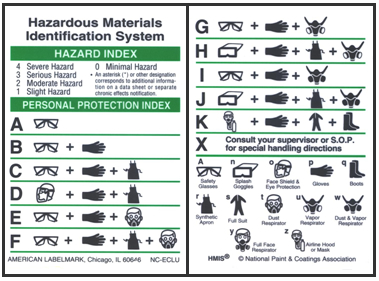
Hmis labels must include
Label requirements for hazardous waste | 2018-09-23 | Safety+Health Examples of how to indicate the hazards include: The words of the applicable hazardous waste characteristic (s) (i.e., ignitable, corrosive, reactive, toxic). Hazard communication consistent with DOT requirements at 49 CFR Part 172 Subpart E (labeling) or Subpart F (placarding). A hazard statement or pictogram consistent with the OSHA Hazard ... Chemical Container Labels | EHS - University of Washington EH&S has designed four secondary chemical container label templates for your use. Templates A and B are PDF fillable forms. Templates C and D are Word documents that show GHS pictograms. Templates A, B and C are formatted for printing on Avery 5163 (2" x 4" label, 8 labels, 8½" x 11" page). All templates can be resized to fit smaller ... Hazardous Waste Label Requirements | EPA & DOT Compliance The DOT requirements for hazardous waste labeling, while they are being transported or shipped, are much more complex than EPA requirements, but are overseen and determined by EPA guidelines. The requirements of a shipper to be DOT compliant include: Determination. Class/division identification. Packaging.
Hmis labels must include. PDF How to use an HMIS Label - Maryland Institute College of Art HMIS Health Rating Chart 0- Minimal Hazard Materials that will not burn. 1- Slight Hazard Materials that must be preheated before ignition will occur. Includes liq-uids, solids, and semi-solids having a flash point above 200° F. (Class IIIB) 2- Moderate Hazard Materials which must be moderately heated or exposed to high ambient HazCom: The GHS label requirements - Enviro.BLR.com By June 1, 2015, chemical manufacturers and importers must comply with all the requirements of the HazCom 2012 (e.g., hazard classification, GHS-compliant label and the SDS), except compliance with the GHS label requirements is optional for distributors until December 1, 2015. By that date, all shipments of chemical containers must include the ... GHS Label Requirements, Guidelines, and Best Practices For example, all GHS-compliant labeling must include hazard pictograms. However, the environmental risk pictogram is optional in the U.S. but may be required on environmentally hazardous products in other countries. These labels are required for primary containers, but aren't always needed on secondary containers. Labeling requirements of hazardous chemicals. | Occupational Safety and ... iii) Name and address of the chemical manufacturer, importer, or other responsible party. The using employer has the responsibility to ensure that each container of hazardous chemical in the workplace is labeled, tagged, or marked with the following information: i) Identity of the hazardous chemical (s); ii) Appropriate hazard warnings.
› articles › hardhatHard Hat Classes - Creative Safety Supply Aug 06, 2021 · The hard hat classifications must be sufficient enough for the environment that employees are exposed to; The hat must be able to resist impact, penetration, and electrical shock when required; Regular inspection must be performed by the employee using the hard hat, with initial testing done by the manufacturer Secondary Container Labels 101: HazCom and WHMIS - ERA Environmental Information on the workplace label must include the three following criteria: ... Moving Forward - HazCom 2012 Labels and NFPA/HMIS . Older labeling requirements for both shipped containers and workplaces, pre-HazCom 2012, were generally performance-based. This means that OSHA's requirements were not black and white. WHMIS 2015 - Labels : OSH Answers - Canadian Centre for Occupational ... The supplier label must include the following information: Product identifier - the brand name, chemical name, common name, generic name or trade name of the hazardous product. Initial supplier identifier - the name, address and telephone number of either the Canadian manufacturer or the Canadian importer*. Are NFPA and/or HMIS Ratings still allowed on OSHA SDS and Labels? For the workplace label, the container must be labeled, tagged, or marked with either the: Product identifier, signal word, pictogram (s), hazard statement (s), and precautionary statement (s) of the hazardous chemical; OR
The Complete Guide to GHS Labels and Compliance Requirements Primary containers must contain all of the label elements, including product identifiers, signal words, pictograms, hazard and precautionary statements, and responsible party information. The label can never be removed, altered, or defaced. › laws-regs › standardinterpretationsRequirements for labeling portable fire extinguishers ... May 15, 1997 · Labels must accurately identify the specific contents allowing employees to follow the correct safety and health procedures and meet the intent of the Hazard Communication Standard. Employers relying on a labeling system such as the HMIS system must augment their hazard communication employee training program to specifically address the target ... US Hazardous Materials Identification System (HMIS) Hazardous Materials Identification System (HMIS) is a voluntary hazard rating scheme developed by American Coatings Association (ACA) to help employers comply with workplace labeling requirements of the U.S. Occupational Safety and Health Administration's (OSHA) revised Hazard Communication Standard (HCS). Occupational Safety and Health Administration 15/05/1997 · Labels must accurately identify the specific contents allowing employees to follow the correct safety and health procedures and meet the intent of the Hazard Communication Standard. Employers relying on a labeling system such as the HMIS system must augment their hazard communication employee training program to specifically address the target ...
PDF GHS Labeling Requirements: Pictograms, Durability, SDS ... - Avery Once a chemical leaves your facility it must have a GHS label. Period. However chemical containers that are ONLY used within the facility are somewhat of a gray area when it comes to OSHA HazCom. NFPA/HMIS labels can be used for workplace chemicals IF the employee is trained as if they had access to the full GHS-compliant label.
What are the 6 Elements of a GHS Label? - Computype 2. Signal Word. A signal word is used to notify the severity of the hazard. There are only two words that might hold this place on the label: "Danger" (severe hazard) or "Warning" (less severe hazard). Only one word will be on each label, to ensure it is clear to the user the severity of the hazardous chemical. 3.
Hazardous Materials Identification System - Wikipedia The Hazardous Materials Identification System ( HMIS) is a numerical hazard rating that incorporates the use of labels with color developed by the American Coatings Association as a compliance aid for the OSHA Hazard Communication (HazCom) Standard. [1] [2] Contents 1 HMIS Color Bar 2 Symbols 2.1 Blue (Health) 2.2 Red (Flammability)
Hazmat Labels, Hazmat Placards, and Hazmat Markings Larger, durable labels - placards look a lot like labels, but they are larger and more durable. They meet design and durability regulations - placards must be printed in the square-on-point configuration measuring 250 mm on all sides and include a solid inner border that is approximately 12.7 mm from the edge of the placard. The hazard class ...
FAQs on Hazard Communication Standard, GHS Labels, Safety Data Sheets ... The written HazCom program must include information on container labeling, collection, availability of safety data sheets, and the employee training program. It also must contain a list of the hazardous chemicals, the means the employer will use to inform employees of the hazards of non-routine tasks (for example, the cleaning of reactor ...
The MSDS HyperGlossary: HMIS In a 2013 interpretation letter, OSHA confirmed that SDS authors may include HMIS and NFPA ratings in Section 2 of the SDS " so long as the ratings in the HMIS label do not contradict or cast doubt on the validity of label information required by HCS 2012 (C.3.1) or impede the user's ability to identify the information required by HCS 2012 (C.3 ...
Dangerous goods - Wikipedia Dangerous goods, abbreviated DG, are substances that when transported are a risk to health, safety, property or the environment.Certain dangerous goods that pose risks even when not being transported are known as hazardous materials (syllabically abbreviated as HAZMAT or hazmat).An example for dangerous goods is hazardous waste which is waste that has …
› sites › defaultBRIEF - Occupational Safety and Health Administration immediate recognition of the hazards. Labels must also provide instructions on how to handle the chemical so that chemical users are informed about how to protect themselves. The label provides information to the workers on the specific hazardous chemical. While labels provide important information for anyone who handles, uses, stores, and
› hazmat-source › hazmatHazmat Labels, Hazmat Placards, and Hazmat Markings - Labelmaster Larger, durable labels - placards look a lot like labels, but they are larger and more durable. They meet design and durability regulations - placards must be printed in the square-on-point configuration measuring 250 mm on all sides and include a solid inner border that is approximately 12.7 mm from the edge of the placard. The hazard class ...
onlinewhmis.ca › three-parts-whmisThe Three Parts of WHMIS | OnlineWHMIS.ca™ Oct 19, 2014 · The Three Parts of WHMIS WHMIS has three very important elements that were designed specifically to provide workers with critical information needed to protect themselves from overexposure or misuse of hazardous materials. 1. Labels The purpose of WHMIS labels are to warn workers that there are potential hazards with the materials which the labels reside on. they also provide information
HMIS® - American Coatings Association Specifically, to align with the GHS, chemical manufacturers and importers must now evaluate hazards based on specific criteria outlined in the revised HCS and provide GHS-conforming SDS and labels that include a harmonized signal word, pictogram and hazard statement for each hazard class and category. Precautionary statements must also be provided.
› blog › industrial-control-panelIndustrial Control Panel Design Guide: Schematics, Standards ... Feb 08, 2022 · Components must be capable of handling the voltage and load current requirements reliably – but they also must function as required. UL standards outline specific requirements for wiring, such as wiring materials, labeling for conductors, sizing for power circuit conductors, and wire sizing. Control Components and Circuits
What Required Information Must GHS Labels Include? - MPC Pictograms are used to group products according to risk level, including health risks, chemical/physical risks, and environmental risks. Manufacturer information - GHS labels must include the manufacturer's name, as well as contact information including an address and phone number. Precautionary statements - Precautionary statements are ...
› articles › oshaOSHA Hearing Protection Requirements - Creative Safety Supply To help combat this problem, OSHA has issued a number of requirements that employers must follow regarding hearing protection. Becoming familiar with OSHA's 29 CFR 1910.95 standard is not only important for remaining in compliance with government regulations, but also to ensure employees are given the protection they need.
GHS-Compliant Labels: What Employers Need to Know Hazardous chemical containers must include either: The label shipped with the chemical container; or; ... (HMIS) as long as those systems are consistent with the GHS labeling system. All information supplied on the alternative labels must be consistent with the GHS label system; for example, there must be no conflicting hazard statement and ...
HMIS and NFPA: Do They Still Work? - ICC Compliance Center Use of NFPA or HMIS styled system. The obligation is to ensure employees - based on the employer labeling system, training, and other information available in the workplace - are aware of all hazards of the chemicals to which they are exposed. On one hand, the bar is set very low for what has to go on a secondary workplace label.
BRIEF - Occupational Safety and Health Administration shaped labels that the U.S. Department of Transportation (DOT) requires for the transport of chemicals, including chemical drums, chemical totes, tanks or other containers. Those labels must be on the external part of a shipped container and must meet the DOT requirements set forth in 49 CFR 172, Subpart E. If a label has a DOT transport
Hard Hat Classes - Creative Safety Supply 06/08/2021 · The hard hat classifications must be sufficient enough for the environment that employees are exposed to; The hat must be able to resist impact, penetration, and electrical shock when required; Regular inspection must be performed by the employee using the hard hat, with initial testing done by the manufacturer
Insights on HazCom/GHS container labeling | 2013-10-02 | ISHN HazCom 1994 allowed employers flexibility regarding the use of in-house labeling systems, and OSHA retained that flexibility in the revised HCS. NFPA and HMIS labeling will still be allowed for workplace containers, but they must be consistent with the revised HCS. That is, there can be no conflicting hazard warnings or pictograms.
Workplace Labeling under the GHS - Haz Commpliance Website Up until the GHS came along, many employers used the NFPA or the HMIS label as workplace labeling. These systems are meant to identify the chemical and to alert the user as to what the general hazard is; this uses a 0-4 scale rating to indicate the severity. Workplace labeling includes the labels that are on containers at a place of employment.
WHMIS 2015 - Safety Data Sheet (SDS) : OSH Answers Suppliers and employers must use and follow the WHMIS 2015 requirements for labels and safety data sheets (SDSs) for hazardous products sold, distributed, or imported into Canada. Please refer to the following OSH Answers documents for information about WHMIS 2015: WHMIS 2015 - General WHMIS 2015 - Pictograms WHMIS 2015 - Labels
NFPA 25: Standards for Fire Protection Systems The NFPA 25 Standard for the Inspection, Testing, and Maintenance of Water-Based Fire Protection Systems is considered the baseline for exactly as its title states—a guideline for inspecting, testing, and keeping up with maintenance for water-based fire suppression systems, technology that almost every facility has installed. By following this code, fire incidents have the …
GHS Labeling Requirements: The Definitive Guide [2021 Update ... - Luminer However, it's the actual statement that must appear on the label in order for it to comply with the GHS framework. In total, there are 29 GHS classification categories for unique hazards. These are broken down into three main categories: Physical Hazards Health Hazards Environmental Hazards
Hazardous Waste Label Requirements | EPA & DOT Compliance The DOT requirements for hazardous waste labeling, while they are being transported or shipped, are much more complex than EPA requirements, but are overseen and determined by EPA guidelines. The requirements of a shipper to be DOT compliant include: Determination. Class/division identification. Packaging.
Chemical Container Labels | EHS - University of Washington EH&S has designed four secondary chemical container label templates for your use. Templates A and B are PDF fillable forms. Templates C and D are Word documents that show GHS pictograms. Templates A, B and C are formatted for printing on Avery 5163 (2" x 4" label, 8 labels, 8½" x 11" page). All templates can be resized to fit smaller ...
Label requirements for hazardous waste | 2018-09-23 | Safety+Health Examples of how to indicate the hazards include: The words of the applicable hazardous waste characteristic (s) (i.e., ignitable, corrosive, reactive, toxic). Hazard communication consistent with DOT requirements at 49 CFR Part 172 Subpart E (labeling) or Subpart F (placarding). A hazard statement or pictogram consistent with the OSHA Hazard ...


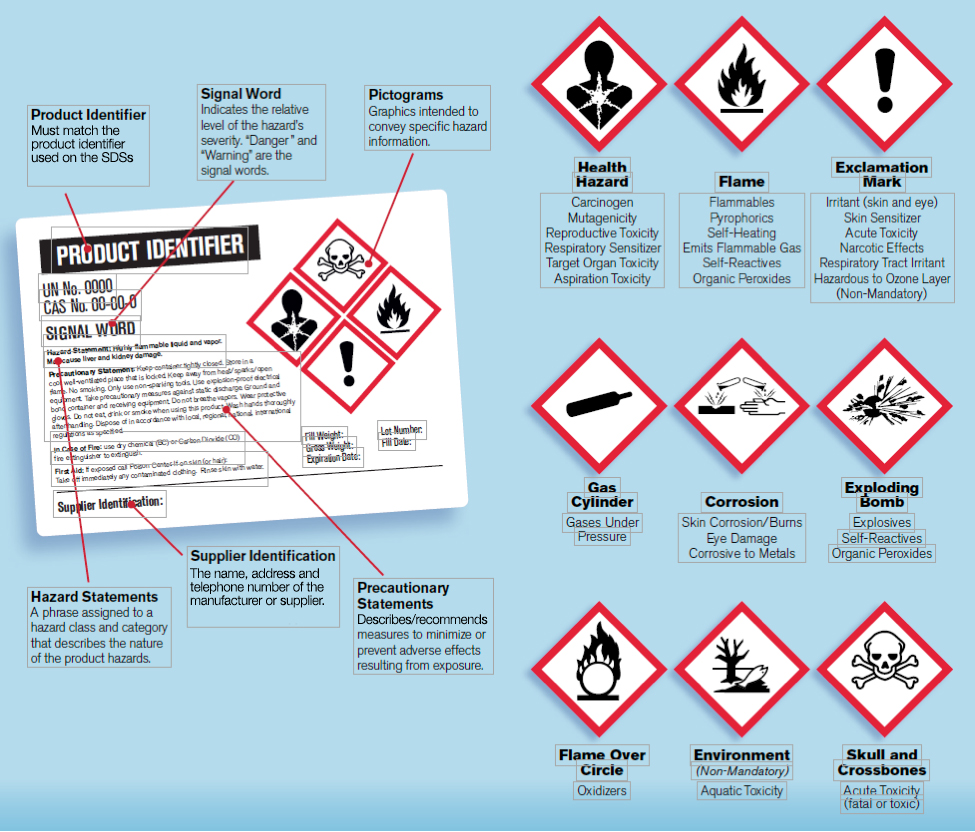
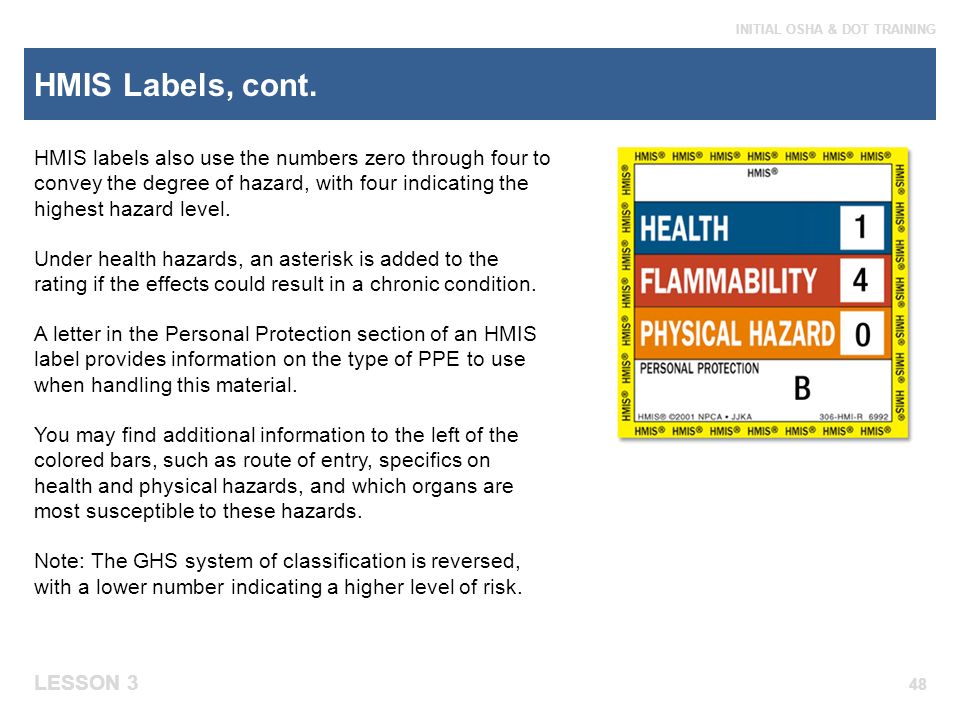
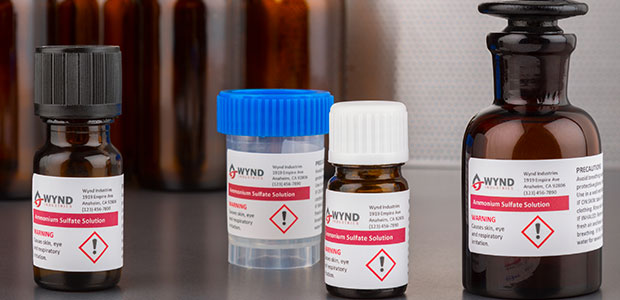
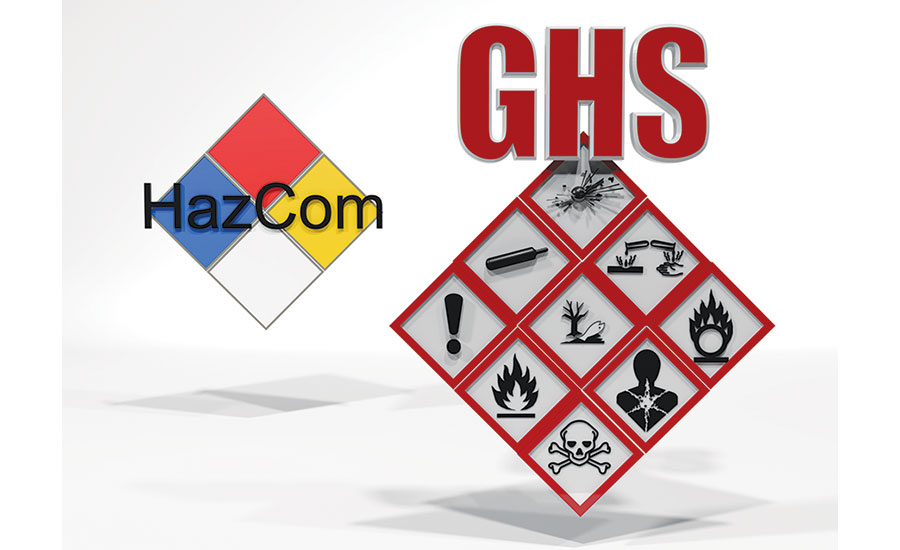
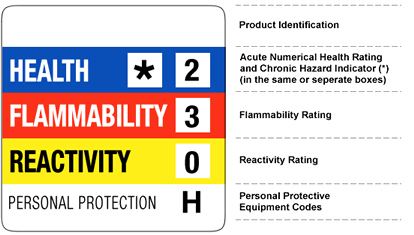





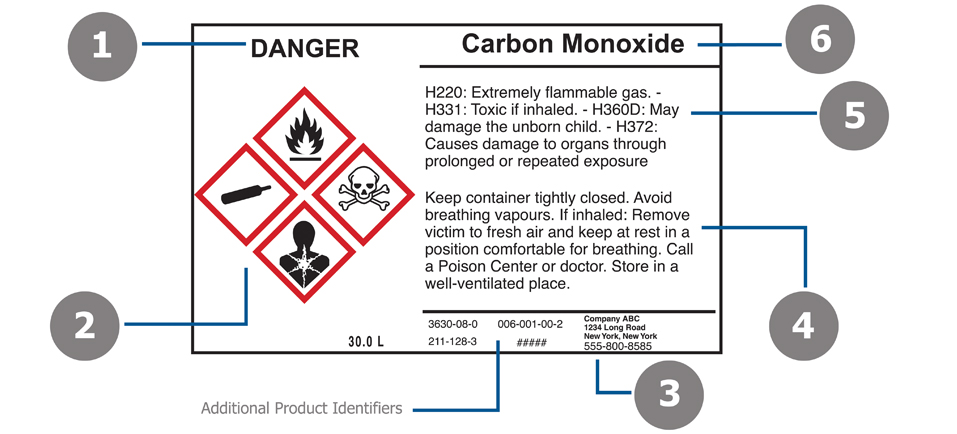


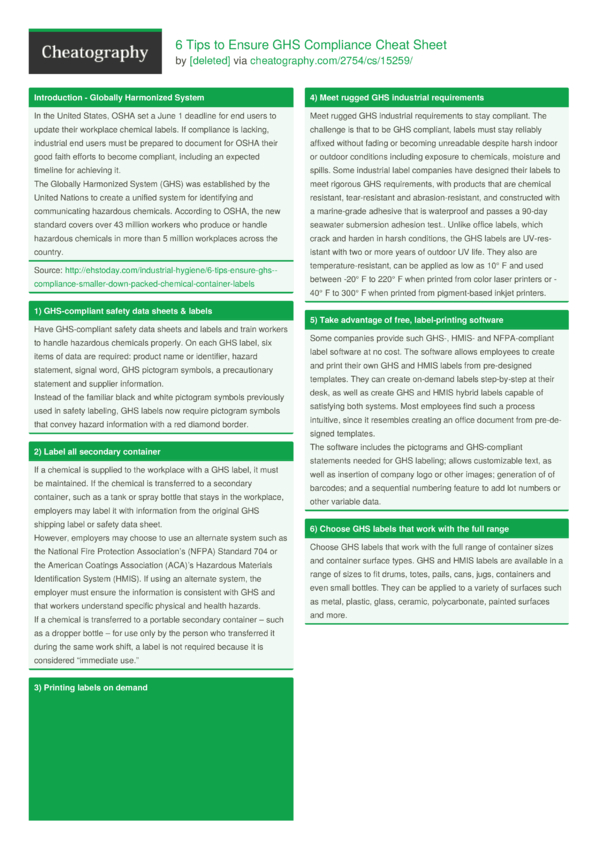


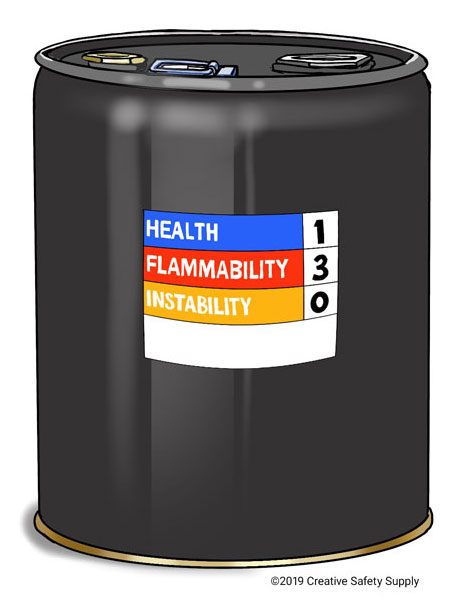

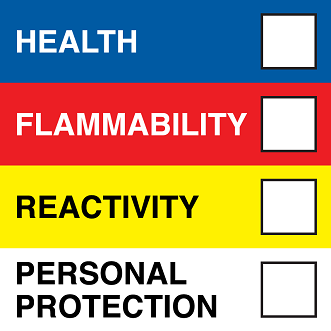

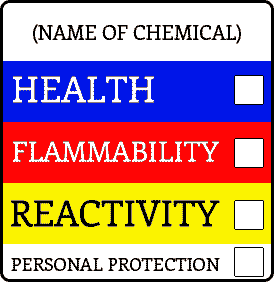



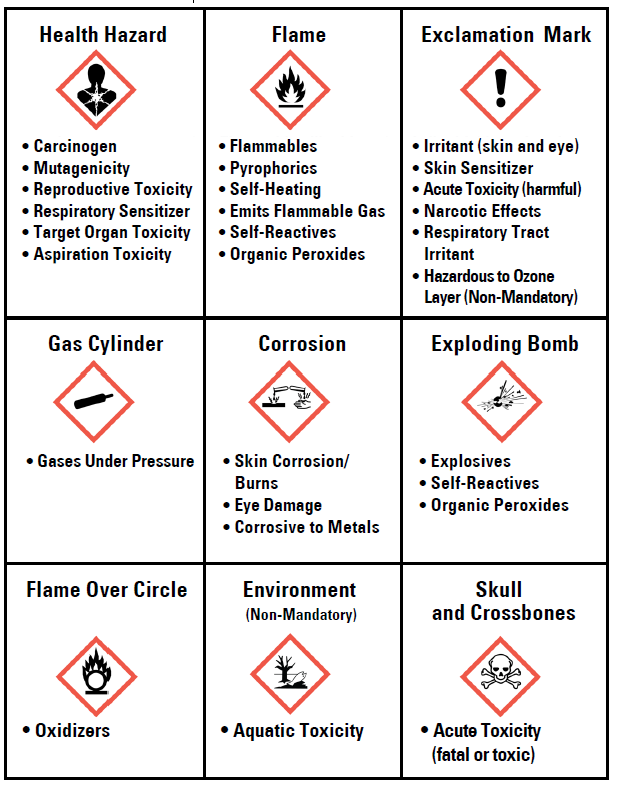

Post a Comment for "39 hmis labels must include"